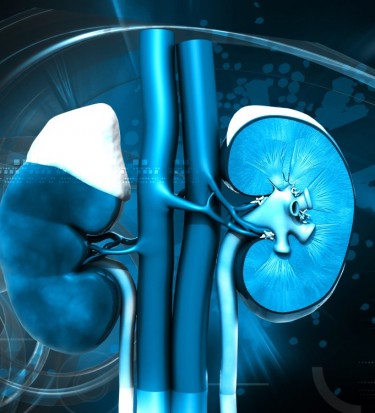Kidney transplantation is major surgery. The procedure to surgically connect a donated kidney to a transplant patient takes about three hours. Only one functioning kidney is needed to live a healthy life. The first kidney transplant was done in 1933 where a cadaver kidney was placed in the thigh of the transplant recipient. Modern kidney transplants place donated kidneys in the lower abdomen. In most instances, the transplant recipient’s kidneys are not removed. Kidney transplantation has advanced medically to the point it is no longer considered to be a last resort treatment. The surgery has risks, and anti-rejection medications must be taken for the rest of the transplant recipient’s life, but most patients who receive a kidney transplant can resume a normal life.
Kidney Rejection
Early transplants often eventually failed because the body’s immune system would recognize the transplanted organ as a foreign invader and destroy it. Though the surgical skills existed to successfully transplant a kidney, the medications to suppress the immune system to not reject the kidney did not. As medical science advanced, the ability to match kidneys with recipients also improved.
Transplanted Kidney Longevity
The first kidney transplant in 1933 was not a match for the recipient, and the patient died two days later. Later transplants lasted weeks and months. As immune suppression drugs, matching and surgical procedures improved, transplanted kidneys began to have an average life measured in years. Donated kidneys from cadavers last an average of up to 12 years. A kidney from a living donor can have an average lifespan up to 20 years. Typically, transplant recipients live up to 15 years longer than those in kidney failure who are on dialysis.
The Need for Kidneys to Transplant
The annual list of people needing a kidney transplant now exceeds 100,000, but the available kidneys is less than 20,000. This means over 80 percent of those placed on the waiting list will not receive a transplant during the year. Every person that chooses to donate kidneys at death can save two lives. Living donors can choose to donate one kidney since a single kidney can do all the work it needs to do. Though it is more common for a living donor to give a kidney to a close relative in need, a living donor can also donate to someone not known to them.
Over 500,000 people in the United States are suffering from end-stage renal failure. About 87,000 die every year as a result of kidney disease. Diabetes is the leading cause of kidney failure. African-Americans are at a risk that is three and a half times as high for kidney disease than Caucasians. Kidney disease is a serious medical issue that continues to grow each year. At present, kidney transplant is the best option for a chance at a normal life for those suffering from total renal failure.
Advertisement








